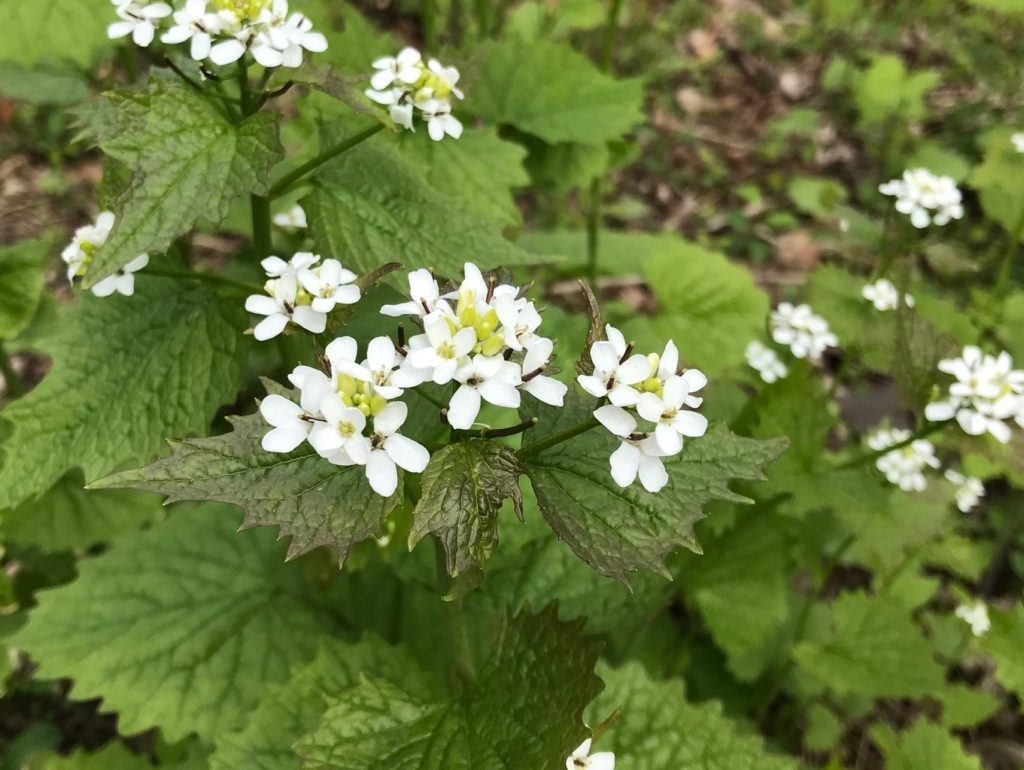
We all know that we should not pick wildflowers, much less, dig them up. But here’s an exception!
Garlic mustard.
This is a non-native, highly invasive herbaceous plant that is spreading rapidly in our woodlots, forests, and along wooded roadsides. It dominates in our forest understory, crowding out native species and reducing the diversity of all species.
Garlic mustard is in full bloom now and will continue blooming into June. It is easy to recognize with a small cluster of white flowers at the top, each with four petals. It has heart-shaped, toothed leaves and grows from 6 inches to 2 feet or more.
So, here’s your chance to get outside and improve the habitat. You can pull this plant by hand – roots and all. Then hang them upside down from a branch or lay them on rocks to prevent re-rooting.
Unfortunately, garlic mustard has a biennial life cycle. It takes two years to flower – and produce seeds. As with the control of all invasive species, persistence is important. Last year, the Friends Pervasive Invasive Species Control Team spent a work session pulling garlic mustard on the Nature Detective Trail. Here’s hoping we can get back soon to continue our work.
Note: While a nuisance in the environment, garlic mustard has long been used by cooks as a flavorful ingredient. An internet search for garlic mustard recipes will produce a variety of interesting, and perhaps tasty, options for the mitigation of this invasive plant.

